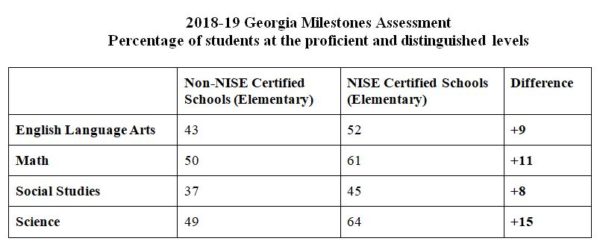Carroll County Schools’ (CCS) mission is to develop globally competitive college and career graduates. In our rural school system, which is located 50 miles west of Atlanta, more than 60 percent of students are economically disadvantaged. We know that students in our community will have to compete with others who have very different experiences and opportunities.
To ensure students are college and career ready, we must provide them with the skills they need to be prepared for jobs that don’t even exist yet. Science, technology, engineering, and math (STEM) integration is a key part of this.
Related content: 6 things to know about STEM education today
It is a district-wide focus to promote a 21st century learning environment and increase STEM education opportunities for all students. Through STEM, we are helping students develop communication, collaboration, creativity, and critical thinking skills — the four Cs critical to success in college and careers. Our district consistently ranks in the top 20 percent of school systems in Georgia, and we attribute much of this success to an emphasis on literacy, math, and STEM education.
Here are a few strategies we have implemented to support excellence in STEM education and teaching — and teaching across the curriculum.
Take a cohesive approach to professional learning in STEM
Before I moved to the district level to support STEM growth and development for all of our schools, I was the principal of Whitesburg Elementary in CCS. Like many schools, we ventured into STEM education through trial and error. Our teachers participated in a variety of professional development courses to learn how to implement STEM challenges and engineering projects. However, there wasn’t much consistency, and many of our teaching methods were rooted in the past.
To deliver a consistent, cohesive STEM education program, we decided to pursue national certification. In 2018, we became the first school in Georgia to earn the National Certificate for STEM Excellence (NCSE)–Campus Certificate from the National Institute for STEM Education (NISE). In addition, five of our teachers earned the National Certificate for STEM Teaching (NCST). Since then, three additional schools and 20 teachers in CCS have earned these certifications, and several more are pursuing them this year.
Create a clear understanding of what STEM is (and isn’t)
The certification process helped us better define and understand STEM, and focus on high-impact STEM instructional strategies that work synergistically across content areas. We learned that STEM is not simply about STEM kits and supplies. STEM occurs in the mind and is complemented by hands, not the other way around. It’s less about the “making” and “building,” and more about thinking and problem-solving.
Our teachers now understand that STEM is about teaching students the skills they need to successfully navigate their way through any subject. They see that it’s about integrating 21st century skills with the standards to provide highly engaging, challenging learning experiences for students. They are better at facilitating learning and helping students become independent learners. They encourage students to think through problems and come up with solutions, instead of simply having them build something.
Learn together
It is helpful to have school leaders participate in professional learning alongside teachers. This allows us to support teachers if they’re struggling with a particular action, like creating a positive classroom culture or implementing project-based learning. This ongoing support also helps teachers immediately apply the strategies they are learning in their classrooms.
Integrate professional learning with what teachers are already doing
Professional learning should not be “one more thing” to do. New STEM strategies, tools, and modalities should be integrated with what teachers are already doing in their classrooms. It should help them meet standards and deliver content in a more effective way.
Look at the impact on student learning
As a result of our professional learning in STEM, a lot has changed in our schools. Teachers are more confident. The amount of time spent on STEM education has increased substantially. Teachers are designing instructional practices using the four Cs, so students are highly engaged. Students have a more goal-oriented mindset. They are more resourceful, reflective, resilient, and responsible because they are taking ownership of their learning.
All of this has had a positive impact on student achievement. By focusing on STEM, we have improved our effectiveness and increased student learning. On common district assessments, standardized assessments like the STAR, and state assessments, our STEM-certified schools consistently outperform other schools because of the way they have transformed their instruction.
Extend the learning
Other teachers and leaders in CCS see the way students are responding and the results produced by that level of learning, and they want to be part of it, too. So, we created our own district STEM certification process to create a foundation for STEM district-wide. This process demystifies STEM for principals and teachers. They learn that STEM is a culture, not a project or a class. They see that STEM is about educating students in an interdisciplinary way, based on real-world applications. All of this provides a strong foundation for the national certification process, which is their next step.
Our district is now seen as a leader in STEM, and our community values and feels invested in our schools. This is the type of learning all students need.
- High school students say AI will change the workforce - April 18, 2024
- Motivating students using the Self-Determination Theory - April 17, 2024
- Michigan Virtual’s statewide workgroup releasing AI guidance for K-12 educators - April 17, 2024



